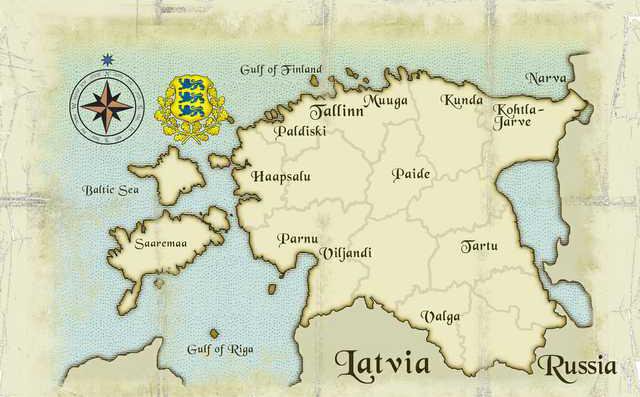The rising star in education innovation may be Estonia. And according to the Hechinger report, it gets its momentum not by ignoring struggling students at the bottom of the curve but by pulling them along.
We have been able to keep education very even, Jrgen Ligi, the Estonian minister of education, told Hechinger. It has worked.
In the 2012 PISA tests, administered by the Organization for Economic Cooperation and Development, Estonia's scores and ranking jumped significantly to 11th in math and reading and to 4th among European countries. In reading, only Finland, Ireland and Poland scores higher. And in math, only Leichtenstein, Switzerland and Netherlands did better.
Hechinger notes that Estonia not only tops France and Germany in overall scores, but that "Estonia also had the smallest number of weak performers in all of Europe, about 10 percent in math and reading and 5 percent in science."
For years now, reports on Finland's educational evidence have whirled around the U.S., to the point that many education experts have begin pushing back, making the obvious point about comparing apples and oranges.
"Finlands child poverty rate is slightly more than 4 percent," notes University of Minnesota professor Robert Shumer in one such op ed. "In the United States it is almost 21 percent. In some areas of the U.S. (often in southern regions), the youth population that is poor exceeds 40 percent."
Shumer cites a litany of differences that make facile comparisons with Finland problematic.
That said, the Hechinger Report writeup on Estonia suggests that some points of emphasis between a tiny country and the U.S. might still have applicability.
Estonia is not nearly as homogenous as one might think, for instance, and closing achievement gaps is a major concern. About 1/5 of Estonian students are native Russian speakers, and they have historically lagged behind their Estonian peers.
"Although the gap is still big," the Estonian Ministry of education notes, "it is decreasing rapidly."
The striking thing about Estonia is that the gaps between poor and wealthy students, and among ethnic minorities and majorities, are much smaller than in most wealthier Western countries.
Estonia's performance between its poorest and richest students was the lowest out of all participating OECD countries, Hechinger notes, and "more than a third of low-income students were among the countrys top performers."
In addition to a focus on equality, Estonia's education model is striking in a number of other ways. Teachers stay with the same students from 1st through 3rd grade, and sometimes as far as 6th grade. And like Finland, teachers are highly professionalized and have significant autonomy in the classroom.
But the overriding distinction appears to a strong focus on pulling all students along, and intervening when students slip behind.
We really follow the straight line that everyone is equal, Karin Lukk, principal of Tartu Kivilinna Kool, a grade 1-9 school in Estonias second largest city told Hechinger. It doesnt matter what kind of family you come from, you can still achieve a lot.
We have been able to keep education very even, Jrgen Ligi, the Estonian minister of education, told Hechinger. It has worked.
In the 2012 PISA tests, administered by the Organization for Economic Cooperation and Development, Estonia's scores and ranking jumped significantly to 11th in math and reading and to 4th among European countries. In reading, only Finland, Ireland and Poland scores higher. And in math, only Leichtenstein, Switzerland and Netherlands did better.
Hechinger notes that Estonia not only tops France and Germany in overall scores, but that "Estonia also had the smallest number of weak performers in all of Europe, about 10 percent in math and reading and 5 percent in science."
For years now, reports on Finland's educational evidence have whirled around the U.S., to the point that many education experts have begin pushing back, making the obvious point about comparing apples and oranges.
"Finlands child poverty rate is slightly more than 4 percent," notes University of Minnesota professor Robert Shumer in one such op ed. "In the United States it is almost 21 percent. In some areas of the U.S. (often in southern regions), the youth population that is poor exceeds 40 percent."
Shumer cites a litany of differences that make facile comparisons with Finland problematic.
That said, the Hechinger Report writeup on Estonia suggests that some points of emphasis between a tiny country and the U.S. might still have applicability.
Estonia is not nearly as homogenous as one might think, for instance, and closing achievement gaps is a major concern. About 1/5 of Estonian students are native Russian speakers, and they have historically lagged behind their Estonian peers.
"Although the gap is still big," the Estonian Ministry of education notes, "it is decreasing rapidly."
The striking thing about Estonia is that the gaps between poor and wealthy students, and among ethnic minorities and majorities, are much smaller than in most wealthier Western countries.
Estonia's performance between its poorest and richest students was the lowest out of all participating OECD countries, Hechinger notes, and "more than a third of low-income students were among the countrys top performers."
In addition to a focus on equality, Estonia's education model is striking in a number of other ways. Teachers stay with the same students from 1st through 3rd grade, and sometimes as far as 6th grade. And like Finland, teachers are highly professionalized and have significant autonomy in the classroom.
But the overriding distinction appears to a strong focus on pulling all students along, and intervening when students slip behind.
We really follow the straight line that everyone is equal, Karin Lukk, principal of Tartu Kivilinna Kool, a grade 1-9 school in Estonias second largest city told Hechinger. It doesnt matter what kind of family you come from, you can still achieve a lot.





